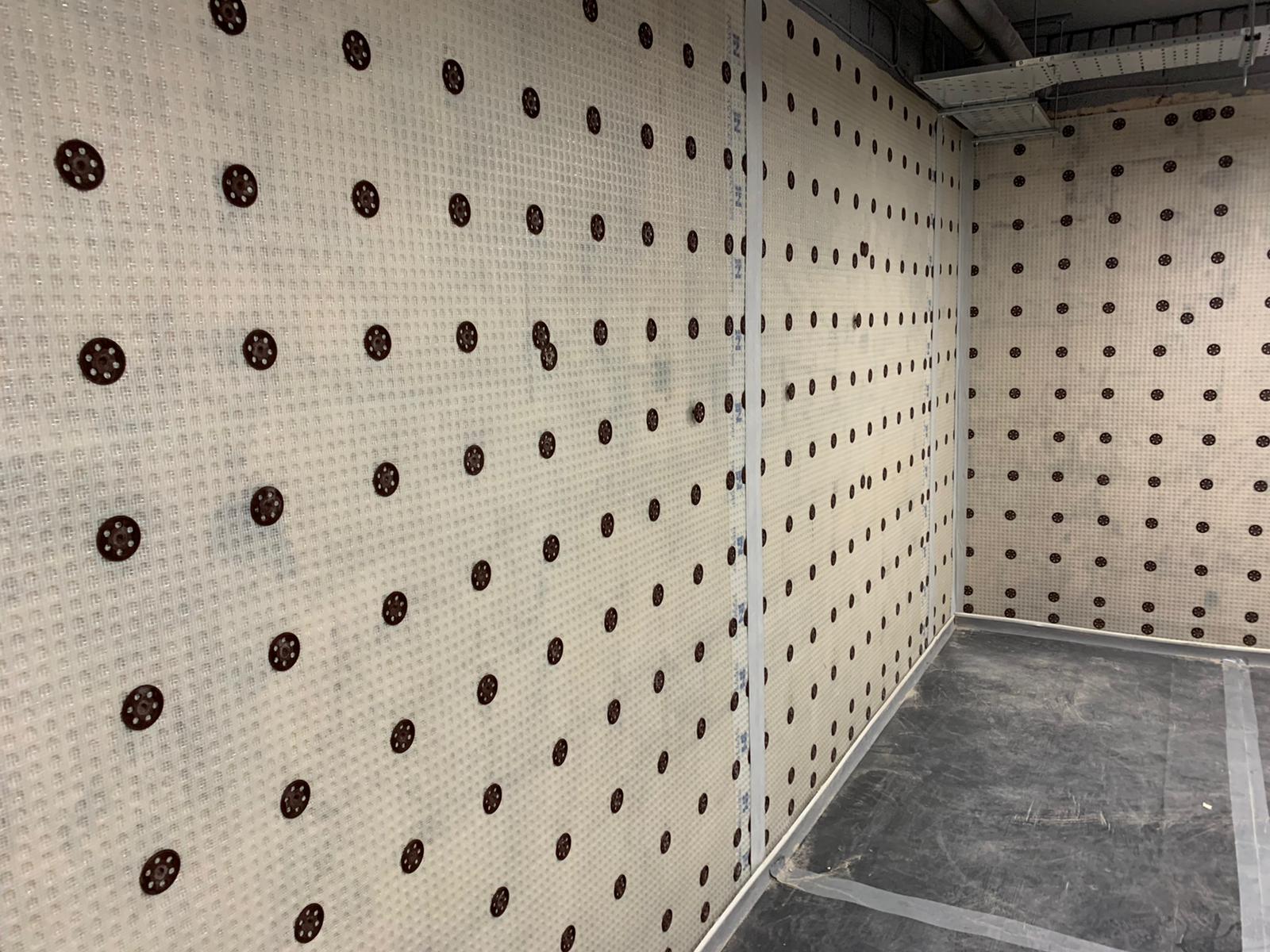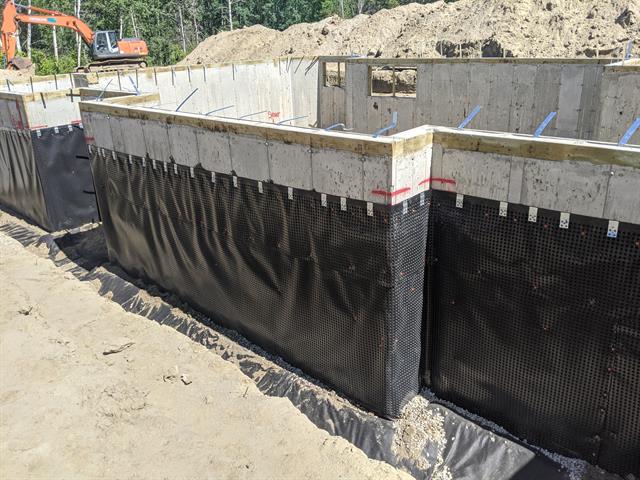Exploring the Numerous Methods and Solutions for Effective Damp Proofing
Dampness in buildings postures considerable obstacles to both architectural honesty and indoor air top quality. Different strategies and solutions have actually arised to fight this prevalent concern. From typical damp-proof membranes to innovative chemical treatments, each method provides distinct benefits. Recognizing these choices is vital for efficient dampness control. However, choosing the ideal option relies on details building conditions and requirements, triggering additional exploration into one of the most efficient wet proofing techniques available.
Understanding the Causes of Wetness
Although wetness can develop from different sources, comprehending these causes is important for effective removal. Typically, dampness stems from three key resources: climbing moist, permeating moist, and condensation. Rising wet happens when groundwater travels up via porous products, such as brick or rock, commonly because of an absence of a reliable barrier (damp specialist newcastle). Passing through moist is usually brought on by exterior variables, consisting of roofing system leaks, defective seamless gutters, or damaged walls, enabling water to infiltrate a building. Condensation, on the other hand, results from excess dampness in the air, usually aggravated by poor air flow and temperature differences, bring about water droplets basing on surfaces. Recognizing these underlying concerns is essential, as each kind of wetness requires a tailored strategy for remediation. Appropriate analysis assists in determining one of the most efficient services, ultimately protecting the structural stability of a building and boosting interior air quality
Conventional Damp-Proof Membrane Layers

Chemical Damp-Proofing Solutions
Chemical damp-proofing options supply a cutting-edge approach to stop moisture intrusion in buildings. These approaches generally include the application of fluid chemicals that penetrate masonry and create an obstacle versus increasing damp. Typically used chemicals include silanes, siloxanes, and other water-repellent representatives that respond with surface area materials to create a hydrophobic layer.The application procedure generally needs drilling openings right into the wall surfaces, injecting the chemical service, and allowing it to heal. This approach is especially beneficial for older structures where typical damp-proof membrane layers may be impractical. Furthermore, chemical damp-proofing can be much less turbulent and more affordable than extensive renovation projects.While efficient, these solutions rely on appropriate application and ecological conditions for peak performance. Normal upkeep and monitoring are vital to assure the durability of the damp-proofing therapy. On the whole, chemical damp-proofing represents a functional choice for guarding buildings versus moisture-related damage
Dental Caries Wall Building Strategies
Tooth cavity wall surface construction methods supply numerous advantages, specifically in moisture control and energy effectiveness. By including an air void between two layers of stonework, these walls successfully reduce water access while boosting insulation. This combination not only secures frameworks from dampness however additionally adds to minimized power usage.
Advantages of Dental Caries Walls
When thinking about efficient wet proofing approaches, the benefits of cavity walls stand apart prominently. Dental caries wall surfaces contain 2 different layers, developing an air void that effectively decreases wetness penetration. This design reduces the threat of wetness, as the outer wall acts as a barrier against rainfall and water access. In addition, dental caries walls enhance thermal insulation, which contributes to energy effectiveness by minimizing warm loss. They also supply audio insulation, aiding to develop a quieter interior setting. The air gap permits for air flow, which helps in moisture control and lowers the chance of mold and mildew growth. These benefits not only boost the general convenience of a structure however additionally add to its durability and architectural stability.
Moisture Control Approaches
Efficient moisture control approaches are important in cavity wall building to assure long-lasting security versus wetness. One primary technique entails the incorporation of weep holes, which promote water drainage from the tooth cavity, protecting against accumulation. Furthermore, using breathable membrane layers can aid manage dampness levels while permitting trapped vapor to leave. Proper positioning of insulation is additionally vital, as it needs to not obstruct drainage paths. Additionally, ensuring that the outer leaves of the tooth cavity wall surface are created with water-resistant materials boosts general toughness. Routine upkeep checks are essential to determine any type of clogs or damages early, guarding the framework's integrity. Ultimately, a combination of these strategies creates a durable protection versus dampness breach in dental caries wall surfaces.
Insulation and Power Efficiency
Insulation plays a crucial duty in boosting power effectiveness within tooth cavity wall surface building. By incorporating insulating products, these wall surfaces develop a thermal barrier that decreases warm loss and minimizes energy usage. Efficient insulation not only helps maintain a steady interior temperature level yet also reduces the danger of moisture, as it prevents condensation within the wall surface dental caries. Different techniques, such as making use of rigid foam boards or mineral woollen, can be click here utilized to achieve ideal insulation efficiency. Furthermore, proper installment is necessary to assure that spaces and gaps are minimized, which can or else jeopardize energy performance. Eventually, a well-insulated cavity wall surface contributes greatly to overall sustainability and reduces heating and air conditioning expenses for homeowners.
Exterior Damp Proofing Techniques
External moist proofing techniques are necessary for securing frameworks from moisture seepage. Two effective techniques consist of the application of water resistant membranes and the installment of French drains. These services aid mitigate water buildup and preserve the stability of buildings.
Waterproof Membrane Application
While different techniques exist for preventing wetness access, the application of water-proof membranes continues to be a highly efficient exterior wet proofing technique. These membranes are usually made from materials such as polyethylene, rubber, or changed bitumen, supplying a durable obstacle against water infiltration. The setup procedure entails using the membrane to the exterior surfaces of structures or wall surfaces, guaranteeing full insurance coverage to avoid leaks. Appropriate bond and sealing at joints are essential to taking full advantage of performance. Waterproof membrane layers can be used in various types, consisting of fluid coverings and sheet membranes, permitting flexibility based on the particular demands of the framework. This approach not just protects buildings from dampness but also improves their durability and architectural stability.
French Drainpipe Installation
One effective approach for managing groundwater and protecting against wetness accumulation around a structure's structure is the installment of a French drainpipe. This water drainage system is composed of a trench filled up with gravel and a perforated pipeline that reroutes surface area water away from the foundation. Correct setup needs mindful preparation, making certain that the drainpipe inclines far from the structure to assist in suitable water circulation. Furthermore, the place of the drain is essential; it needs to be placed in locations prone to pooling or excess moisture. Normal maintenance, consisting of cleaning particles from the crushed rock and ensuring the pipeline remains unhampered, is essential for lasting effectiveness. Inevitably, a well-installed French drain can significantly reduce the threat of water-related issues in structures and basements.
Interior Waterproofing Strategies
Inside waterproofing strategies are vital for protecting a building's inside from moisture seepage and potential water damage. These approaches normally involve the application of customized materials and methods made to create a wetness obstacle within the structure. One typical strategy is making use of water resistant finishes or sealants on walls and floorings, which protect against moisture from permeating surfaces.Additionally, mounting interior drainage systems, such as sump pumps, can successfully take care of water accumulation in cellars and creep rooms. One more technique involves using vapor obstacles, which are mounted to inhibit dampness motion from the ground into living spaces.Moreover, resolving any kind of splits or gaps in walls or structures with ideal sealants guarantees a detailed defense against water invasion. By applying these interior waterproofing techniques, home proprietors can substantially reduce the risk of mold growth, architectural damages, and various other moisture-related problems. Appropriate implementation of these methods is vital for long-lasting security and building stability.
Routine Maintenance and Evaluation Practices
Regular maintenance and inspection techniques are essential for assuring the long-lasting efficiency of moist proofing options in any kind of structure. Regular checks make it possible for homeowner to identify very early indicators of dampness breach, such as peeling off paint, mold growth, and mildewy smells. These indications can signify underlying concerns that call for instant attention.Inspections must be conducted at the very least each year, concentrating on prone locations like cellars, creep rooms, and exterior wall surfaces. Throughout these evaluations, homeowner must take a look at sealers, drainage systems, and air flow to validate they work correctly.Additionally, keeping rain gutters and downspouts is essential, as stopped up systems can lead to water build-up near the foundation. Carrying out a regular upkeep routine, along with prompt repair work, can considerably expand the life expectancy of damp proofing actions and secure the structural stability of the structure. Aggressive steps inevitably contribute to the general health and wellness of the living atmosphere.
Regularly Asked Concerns
The Length Of Time Does Damp Proofing Normally Last?
The period of damp proofing performance varies, normally lasting in between 20 to half a century. Elements such as application top quality, ecological problems, and upkeep practices greatly influence the long life of the moist proofing therapy.

Can I Damp Proof My Home Myself?
The specific considered the feasibility of do it yourself damp proofing. With proper study and the ideal materials, it is possible. They also identified the importance of professional support to guarantee durable efficiency and protect against future issues.
What Are the Indications of Inefficient Damp Proofing?
Indications of inadequate damp proofing include relentless musty odors, noticeable mold and mildew development, peeling paint, moist spots on walls, and timber degeneration - mould removal newcastle. Property owners need to deal with these concerns immediately to stop more damage and health and wellness concerns
Does Damp Proofing Affect Indoor Air High Quality?

Just How Much Does Professional Damp Proofing Expense?
Expert moist proofing prices vary considerably, normally ranging from $1,000 to $5,000 depending on the home's size, the degree of the moist problem, and selected methods. Each scenario requires a tailored analysis for accurate pricing. Frequently, wetness stems from three key resources: rising wet, penetrating damp, and condensation. When thinking about efficient wet proofing approaches, the benefits of cavity walls stand out prominently. Outside moist proofing techniques are crucial for protecting structures from wetness seepage. While various techniques exist for stopping moisture ingress, the application of water-proof membranes continues to be a highly effective external damp proofing technique. Signs of ineffective wet proofing consist of consistent stuffy smells, visible mold and mildew development, peeling paint, damp patches on wall surfaces, and wood degeneration.